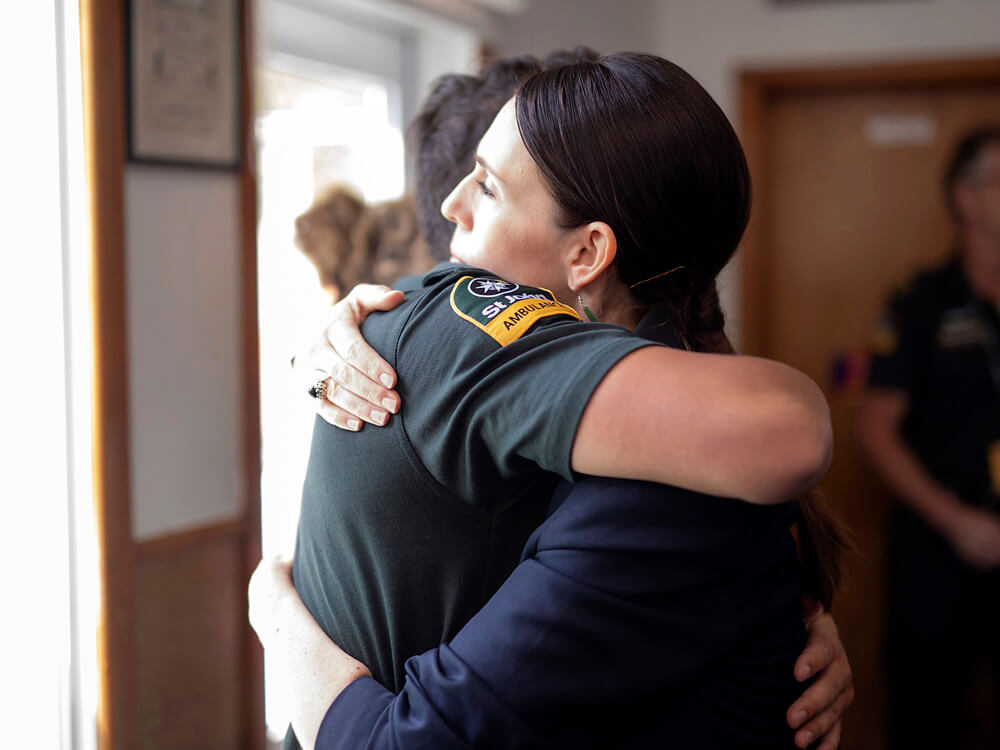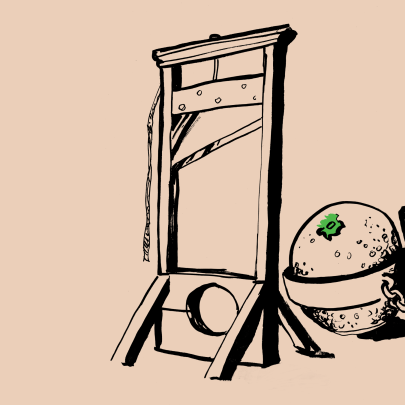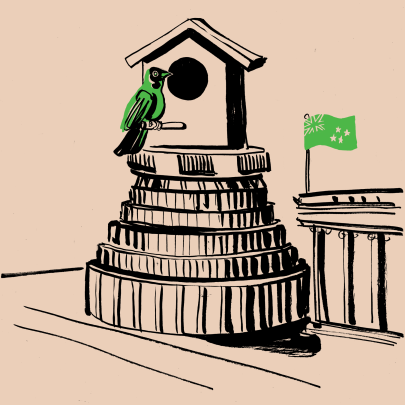Jan 13, 2020 Politics
Jacinda Ardern’s three-party government is on track for re-election, writes Metro political commentator Matthew Hooton.
All MMP elections are extremely close. Even those remembered as one-sided could easily have gone the other way.
In 2011, had just 10,000 National voters switched to Labour, the Maori Party would have had the balance of power between National-Act-United Future and Labour-NZ First-Green. John Key might have been a single-term footnote. Even in 2002, Bill English was just 2-3% away from being able to lead a National-NZ First-Act-United Future government, consigning Helen Clark to a single term. Sure enough, at the end of 2019, the polls had the next election too close to call, with perhaps a tiny advantage to National.
Entering 2020, Jacinda Ardern is certainly popular, but less so than Clark and Key when they first sought re-election. On its cornerstone issues of housing, health and child poverty, Ardern’s Government can point to no substantial progress. KiwiBuild became a joke. The Wellbeing Budget turned out to be a mere slogan with no connection to the Treasury’s Living Standards Framework. The year of delivery didn’t suffer from “speed wobbles”, as Ardern claims, but never got into gear. The multi-party Zero Carbon Act was the one major achievement, but allows National and NZ First to claim they have the same climate change policy as Labour and the Greens.
On ethics, Ardern’s Government has upheld the rule that each administration is worse than the one before — it treats the Official Information Act with contempt; it has abused parliamentary urgency, including to amend the Electoral Act in a fake attempt to ban foreign donations; there have been at least as many ethical scandals as in previous first-term governments, including the allegations of sexual assault by one of the Prime Minister’s own staff, and the murky world of the NZ First Foundation.
It is as if, like the Trump administration, the governing party’s base has separated out its love for the leader from the reality of the shambles over which she or he presides. Such a comparison ultimately fails off course: Ardern is authentically kind and caring, and her strong leadership after the Christchurch terrorist attack and White Island emerges from genuine compassion. But, like Trump, it is Ardern’s celebrity that gives her a clear path to re-election, made easier by the official Opposition having yet to accept it lost 2017 fair and square and believing it need do nothing but pander to its base before a restoration of the rightful order.
Labour’s re-election pitch will not be entirely about its leader. Certainly, like Key in 2011 and Clark in 2002, Ardern will be positioned as personifying everything that is good about New Zealand. We will see her hugging school kids in Grey Lynn and Morrinsville; joking with tradies on construction sites in West Auckland; comforting the sick in their hospital beds; nodding wisely as scientists explain new low-methane pasture; speaking truth to power on the world stage; issuing instructions to her ministers with furrowed brow; visiting temples, churches, mosques and synagogues; and cheering on the Olympic team, the Silver Ferns and Team New Zealand. In contrast, Simon Bridges will be portrayed as un-New Zealand and angry.
This, on its own, might even be enough. But Ardern and Finance Minister Grant Robertson have also outplayed National by being first to latch into the current mood that it is time for things to start happening again.
After the Think Big funding debacle and the trauma of the 1980s and 1990s economic reforms, New Zealanders demanded a break. MMP, Clark and then Key gave us 20 years of relative stability, which delivered reasonable results: unemployment and inflation are both close to non-existent; growth has been adequate, if not spectacular; wages have risen faster than prices; public debt is low and the country has had room to respond well to shocks like the global financial crisis and the Christchurch earthquakes; homeowners and holders of other assets have enjoyed a long-lasting boom; and inequality has at least not widened this century.
But, at every level of society, there is a sense something is missing, whether it is poverty activists wanting more done to help the underclass, the middle class wanting a bit more for hospitals and schools along with serious action against gangs; the business community demanding something finally be done about the Resource Management Act and outdated Building Code; and everyone except perhaps the Opposition understanding that the country’s infrastructure is inadequate after 40 years of insufficient investment and faster-than-expected population growth, under governments red and blue.
In the nick of time after their failed “year of delivery”, Ardern and Robertson accepted in December that Auckland in particular faces an infrastructure crisis of a similar magnitude to that of Christchurch in 2011, and a similar response is required. With net public debt below 20% of GDP, 10-year interest rates at 1.3%, strong surpluses forecast but an uncertain growth outlook, Ardern and Robertson have recognised that it’s not just the politics that supports bolder investment, but the economics as well.
Ardern’s $400 million for schools was a cute way of delivering a small stimulus for every community in the first half of this year, while making sure the schools look spick and span by election day. More importantly, Robertson’s $12 billion pre-Christmas infrastructure announcement — mostly for roading and rail — provides a bureaucratic platform for Labour to launch much larger projects through to election day.
At the same time, Ardern’s historic announcement that Auckland’s car and container port must close is not just good politics in a city of boaties, recreational fishers, kayaks and Optimists, but will discipline NZ First all the way through to the Budget in late May, the same time decisions will be taken about where and when port operations will go. If NZ First wants its port at Marsden Point, it will need to back Labour’s cherished social-policy objectives in the Budget — and vice versa. Assuming the final decision is to expand the already-existing Northport, Ardern will, in practice, be gifting the Northland electorate to NZ First without any suggestion of an Epsom-type deal, while most probably also pushing her coalition partner above 5%. The Greens appear comfortably above 5% so that a second-term Ardern government should continue to have options on its left and right.
Scandals will, of course, emerge in the interim. If the Electoral Commission refers NZ First’s fundraising activities to the police or Serious Fraud Office, Ardern will need to decide whether Winston Peters should step down, as happened in 2008 when NZ First was last referred to the SFO, or continue to be given the benefit of the doubt. Other surprise scandals will inevitably pop up that will challenge the Prime Minister.
These issues, or the port debate, may yet lead to Ardern having to go to the people early, but, after White Island and a hopefully successful 2020 Waitangi Day, she can be confident of winning an election any time after about March.
National strategists disagree with all of the above, of course. They hope the multiparty consensus on the Zero Carbon Act has removed the rationale for people to vote Green rather than Labour, National or even NZ First.
They expect the NZ First funding scandal to fatally destabilise the coalition and drive Peters’ party below 5%. All they would need to do then is go even with Labour on party votes and get into government with Act, now expected to bring in at least a second MP, and perhaps even the Maori Party if it regains Tamaki Makaurau.
This scenario is plausible, but also heroic, and it assumes Bridges will hold his own in a one-on-one sprint to the finish against Ardern. That’s unlikely.
Bridges isn’t as unpopular as his fiercest critics insist — his 10% preferred prime minister rating is perfectly respectable, and better than three-term prime ministers Clark or Jim Bolger often managed as Leader of the Opposition. It is the extent to which people don’t like him that worries National. His unfavourability score is worse than even Peters’. This could be overcome except that National’s message remains pedestrian.
At the end of 2018, Bridges promised National would become a serious policy unit. Discussion documents were meant to flow through 2019, and at least seven did eventuate. But, with the exception of Nikki Kaye’s paper on education, most lacked new ideas. The welfare and crime papers promised to pick up English’s social-investment approach. There was a big focus on combating gangs. Broadly, the economic paper didn’t promise much more than reheating Steven Joyce’s Business Growth Agenda, modest tax cuts targeted at the poor and efforts to lower the cost of living through various reviews. The boldest bit was starting to raise the age of eligibility for superannuation in 2037, six elections away.
National is cautious because it thinks 2020 is almost in the bag. It is still bitter about being turned down by Peters in 2017, even though its MPs now say they are pleased not to have formed a government with him. They think voters will come to their senses this year and elect a fourth term of the Key-English-Joyce regime.
Politics doesn’t usually go backwards like that.
This piece originally appeared in the January-February 2020 issue of Metro magazine, with the headline ‘Home straight’.






